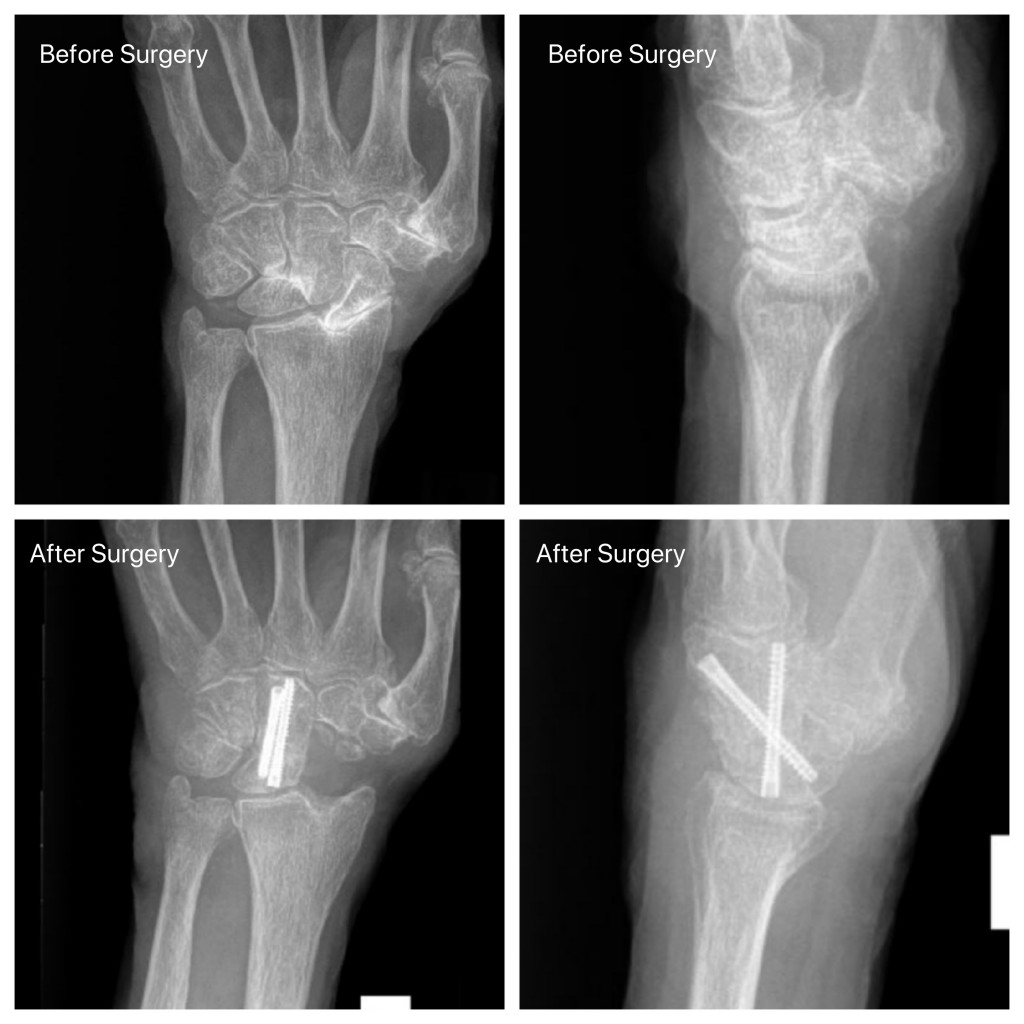What is a SLAC wrist?
SLAC wrist is a type of wrist arthritis. SLAC stands for “Scapho-Lunate Advanced Collapse.” This occurs when the bones of the wrist abnormally wear down the cartilage surfaces, causing osteoarthritis. SLAC wrist can occur after injury to the ligaments which stabilize the wrist bones, most commonly the scapholunate ligament. Some patients cannot recall a specific injury, since the trauma may have occurred many years ago.
Patients with SLAC wrist notice limited range of motion, grip weakness, wrist pain, and swelling. It may be harder to use hand tools and lift heavy objects. Clicking and popping in the wrist may also occur.
What are the treatment options for SLAC wrist?
Treatment options are aided at reducing pain. Using a wrist brace during activity can reduce pain. Taking oral anti-inflammatory medications such as ibuprofen and Naproxen can reduce inflammation and pain, and oral Tylenol can reduce pain. Topical anti-inflammatory creams can also help some patients. Avoiding heavy use of the hand can reduce symptoms. Nutritional supplements such as turmeric and glucosamine/chondroitin sulfate may help.
Corticosteroid injections (cortisone shots) can reduce pain and inflammation in many patients, and are safe if used sparingly. Hand therapy and physical therapy does not seem to help very much.
If the pain is not well controlled and the patient cannot tolerate the symptoms, surgery may be recommended. There are several surgical options available, each with risks and benefits:
- Partial wrist denervation: This surgery is designed to reduce wrist pain by removing nerves in the wrist which supply pain signals to the brain. Only selected nerves which transmit pain are cut. The nerves which provide feeling to the fingers and the nerves which control muscle movement of the hand are protected. This procedure has a quick recovery, low complication rate, but it may not fully relieve pain in some patients.
- Proximal row carpectomy: This surgery is designed to reduce pain by removing the arthritic bones in the wrist, specifically the scaphoid, lunate, and triquetrum bones. The allows the remaining bones in the wrist with cartilage to serve as the new wrist joint. The surgery can take 4-6 weeks to heal and not every patient gets full pain relief. About 50% of wrist motion can be maintained afterwards. In some patients this surgery can wear out and require a total wrist fusion in the future.
- Partial wrist fusion: This surgery reduces pain by fusing together specific arthritic bones in the wrist. Screws, staples, or a plate are options used to fix the bones, which require several weeks to heal in a cast. Smokers are at higher risk of healing complications with this procedure. About 50% of wrist motion can be maintained. In some patients, this surgery can wear out and require a total wrist fusion in the future.
- Total wrist fusion: This surgery is the most effective at reducing wrist pain but all wrist motion is eliminated. Because the major wrist bones are fused together, the wrist does not move anymore. A plate and screws are typically used to fix the bones. As in other fusion surgeries, smokers are at higher risk of healing problems. Revision surgery in the future is not common after this procedure.
- Wrist joint replacement (total wrist arthroplasty): This surgery replaces the arthritic joint with an artificial implant, similar to a knee replacement. This surgery is the least common option at the Raleigh Hand to Shoulder Center, as there are very few patients who are good candidates for this option. There is a high complication rate, such as loosening, breakage, and revision surgery.
Your surgeon will discuss the options which are best for your particular condition. The type of surgery recommended is often based on the pattern of arthritis seen on the x-rays and specific patient factors.

